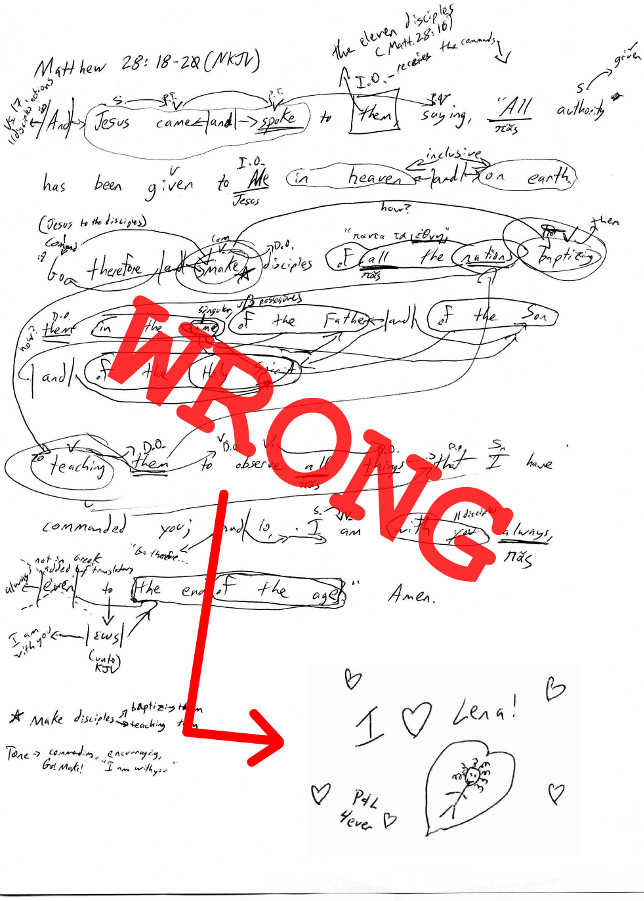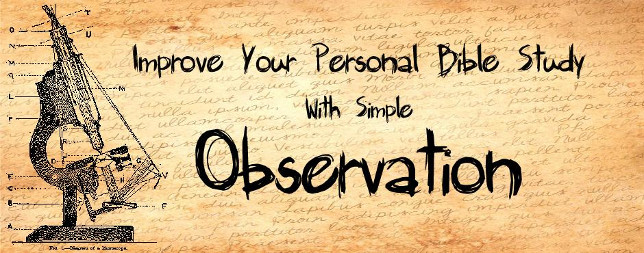By Paul Miles
It is important to stay in the Word and to read through the entire Bible regularly. In an earlier article, we discussed the discipline of reading the Bible and mentioned some ideas about how to read through the Bible in a year or in a month or anything in between. Instead of discussing how to read a lot of the Bible in a short period of time, today we are going to introduce a fun activity that requires spending a lot of time on a short section of the Bible.
Before we can understand and apply God's Word, we first must clearly understand its contents. The best way to start is by establishing a time when we can set aside all of our theological presuppositions, and sit down at a desk with a pencil, paper, and a Bible and just make observations about what is written. The conclusions, interpretation, and applications can all wait for later, we just need to start by digging into the Word to understand what it says. So, start by finding a passage and copying it down.

What should you observe? For starters, you can identify a few basic grammatical structures.
Find the main verbs. What tenses are they (past, present, future)? Who is the subject (the one doing the verb)? What are the direct objects (who or what receives the action) and indirect objects (who or what receives the direct object) of the sentence? Is it a command? If so, who is giving the command and to whom?

If there are pronouns (he, she, it, they, etc.), find their antecedents (what or whom the pronoun refers back to). It's important to stay within the limits of the text while making our observations, but you may leave the passage if it's necessary to clarify any antecedents. Find the conjunctions (and, but, so, etc.) and identify what they're connecting. Some people have specific systems for how they mark different things in their observations, but this exercise is for your benefit, so any scribbles will do so long as you can understand them.
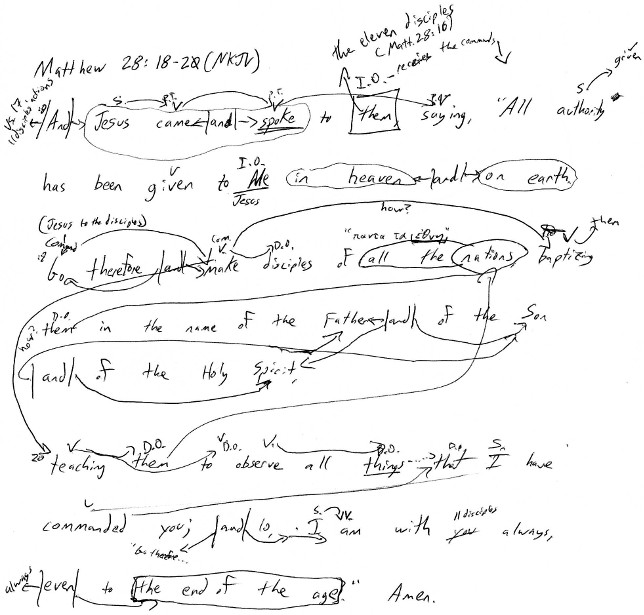
Keep your eye out for prepositional phrases. English translations tend to add prepositions, so be careful not to get them confused with indirect objects (Jesus came and spoke to them), or possessives, (the name of the Father), though objects and possessives are also worth noting if you haven't already. While you are doing this, you might find odd grammatical shifts. For example, we have the phrase, "in the name of the Father and of the Son and of the Holy Spirit." There are three possessives (Father, Son, and Holy Spirit), yet name is singular.
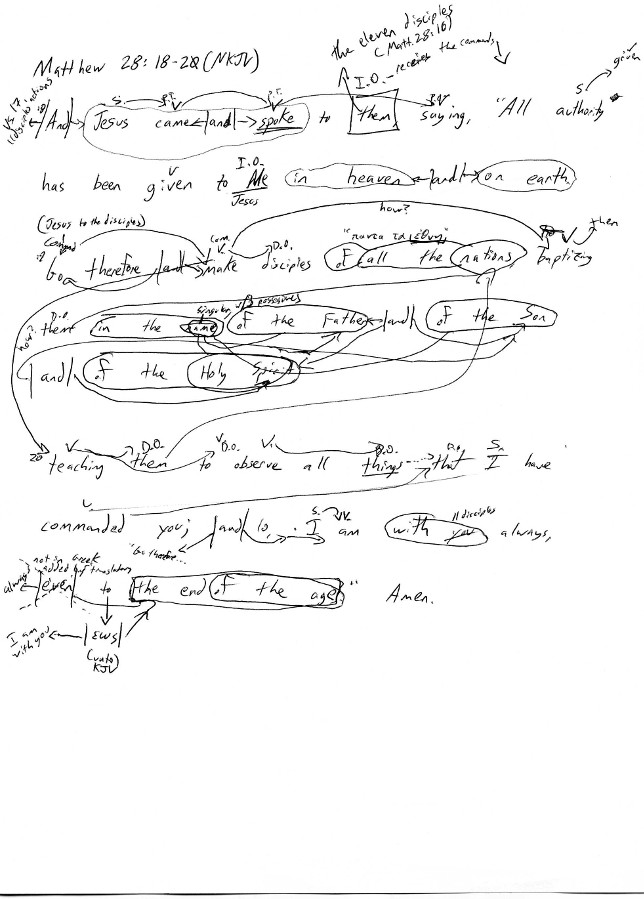
Another important thing to look for is word repetition. If an author repeats a word in a few verses, he's probably trying to let the readers know that it's important. Sometimes words get switched up in translation, so it might be helpful to use an interlinear Bible if you aren't familiar with the original language. Also, keep your eye out for comparisons and contrasts. Are there ideas, people, objects, etc. that are similar or being contrasted? What about conditional clauses (if...then)? What's the tone of the passage? Is it happy, sad, encouraging, commanding?
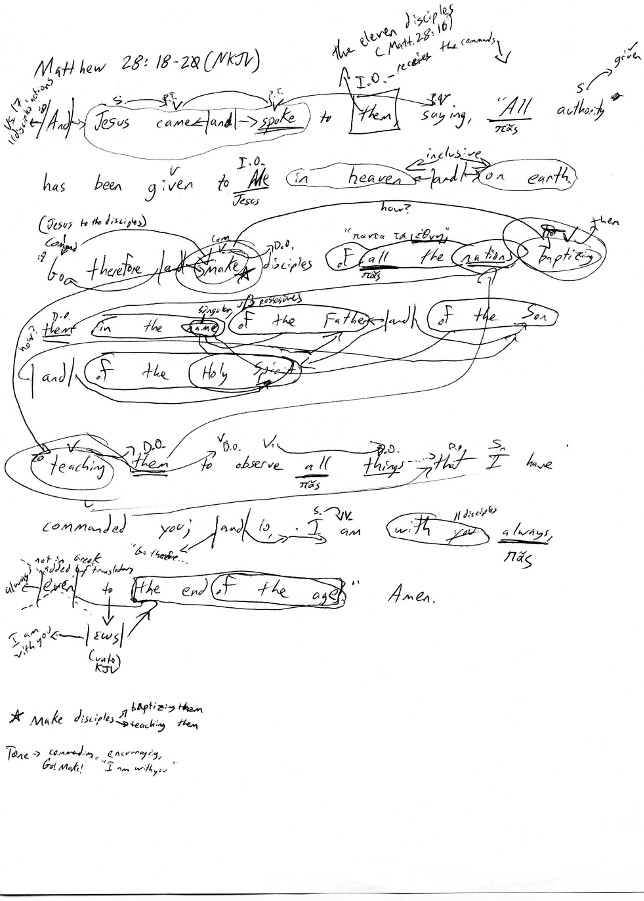
Remember that this exercise is all about making observations. Conclusions will come later, but for now, just see how much you can observe.

Also, be careful not to get distracted. If you find yourself in a rut, just set your notes aside for a bit and pick them up later. It's amazing what you might notice the second time if you just walk away and pick up the passage later.
